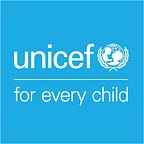Tackling malnutrition in Mali
Simple yet effective nutrition practices prove key in reducing chronic malnutrition in Mali’s breadbasket
In Mali, more than one child in four suffers from chronic malnutrition. In the southern region of Sikasso, long considered the breadbasket of Mali, the rate is even higher. This paradox has become a catalyst to tackle malnutrition head-on, through a community-based awareness programme involving local authorities and role model mothers to encourage good nutrition practices by mothers.
Sikasso is one of Mali’s most fertile regions and many people live off the verdant land, supplying the country’s other regions with fresh produce.
Regular rainfall and arable soils mean all manners of produce are grown, ranging from crops such as rice and potatoes to vegetables such as tomatoes and bell peppers.
At the marketplace in Koutiala, food produce is bountiful and varied, yet Sikasso has the highest rate of chronic malnutrition in Mali — over 30% in 2016. Malnutrition is about more than just food availability.
Gaossou (left) and Aminata are both 5-years-old, yet Gassou is visibly shorter because he suffers from chronic malnutrition. Malnutrition hampers the ability of children to learn and their future potential to earn, as well as the social and economic progress of the countries in which they live.
Bernard Coulibaly, a local official in charge of coordinating nutrition activities in Yorosso, has helped cut chronic malnutrition rates in half in his district in just two years. He was awarded the 2017 “Healthy Not Hungry” Global Goal award for his work in the fight against malnutrition.
In Yorosso, role model mothers like Bassan Koita (centre) spread knowledge of key health, nutrition and hygiene practices to other mothers and caretakers in sessions using simple words and with the support of illustrative pictures.
“Exclusive breastfeeding until 6 months is very important, this helps my baby to be bright, he can be more resistant to diseases” says Kadiatou Dao, 26, after learning that breastmilk is a crucial food for children’s health and development at a session led by Bassan in Yorosso.
During the sessions, mothers also learn to prepare nutrient-rich porridge for babies who are no longer exclusively breastfed, ensuring their children are fed nutritious and age-appropriate food.
Children in Yorosso learn that simple practices can help combat malnutrition at an early age, such as handwashing with soap, and the use of hygienic latrines or toilets.
UNICEF Nutrition Officer Marietta Mounkouro is thrilled to see the health of children in the district improve so quickly. “The main point is to reach a mutual understanding among all involved actors. The community-based and the multisectorial approaches are of crucial importance.”
The success in Yorosso proves that simple and low-cost solutions, like promoting exclusive breastfeeding, proper complementary feeding and handwashing, can go a long way in preventing malnutrition, unleashing the potential of a whole generation of children.
Read about traditional healers and their work to improve nutrition in Mali.
